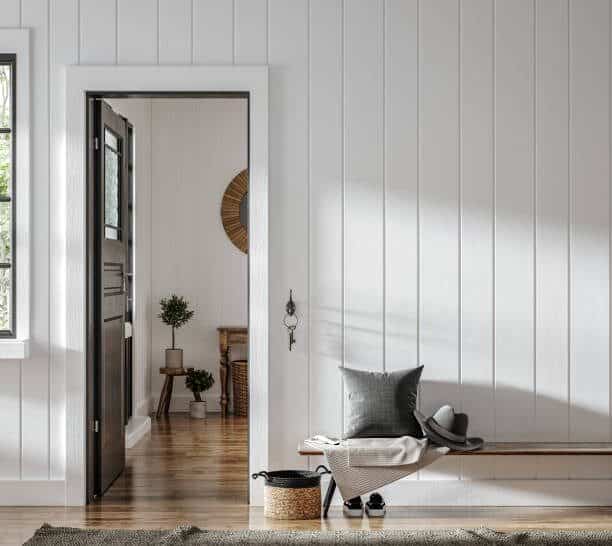Are you on the lookout for a new door? If so, you may feel overwhelmed with the different styles and types of doors available.
Regardless of the type of door you are considering, their three main functions are to protect you, provide privacy, and fortify your house. It means that the doors must be robust.
People frequently overlook the fact that doors have a significant impact on the overall appearance of your house. For instance, an unattractive or unstyled front door can reduce the appeal of your home.
Simply put, the door you choose for your house impacts its safety, overall value, and appearance.
We understand that selecting the ideal door is a significant choice. For this reason, we have created the definitive guide to the most common door styles and types. This guide is essential reading for any homeowner, whether they are renovating their existing home or building a new one from scratch.
Let’s discuss types of doors focussing on these parameters:
- Types of Doors by Material
- Types of Doors by Style
- Types of Commercial Doors
Table of Contents
5 Types of Doors by Materials
Many things can affect your choice when purchasing doors or any other type of real estate.
When selecting a door, security should always come first. You should consider whether the material will work well in your climate, whether the style and decor complement your home, and falls within your budget.
These are some of the best types of doors by material:
1. Wood
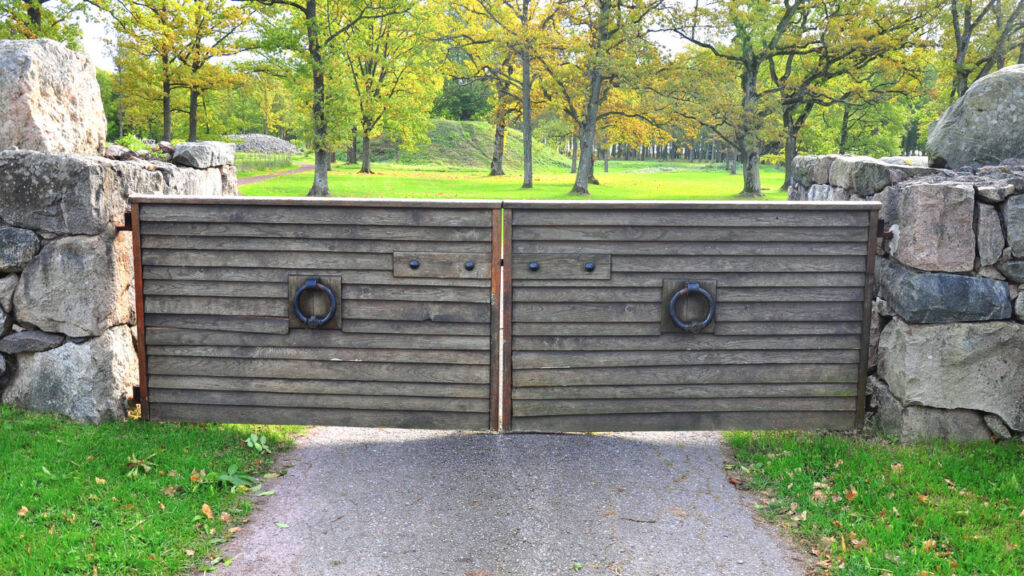
Solid wood is popular for exterior and interior doors because of its strength, durability, and aesthetic appeal.
Typically, wooden doors have panels and frames or one solid slab. They are long-lasting, sound-proof, heavier than doors composed of most other materials, and resistant to dents. Wooden doors help keep your house cool in the summer and warm in the winter because they are excellent insulators.
In addition to adding to the resale value of your home, well-designed wooden doors on the inside and outside can give your decor an opulent, expensive appearance.
However, because termites can infest wooden doors, they need regular maintenance. Wooden doors can also expand, contract, and warp depending on the weather, leading to cracks. Although they cost a little more than other types of doors, they are still well worth the investment due to their classic appeal and virtually endless design options.
However, you can think about engineered doors for your home interior if you want less expensive substitutes for wooden doors with an identical appearance.
2. Metal
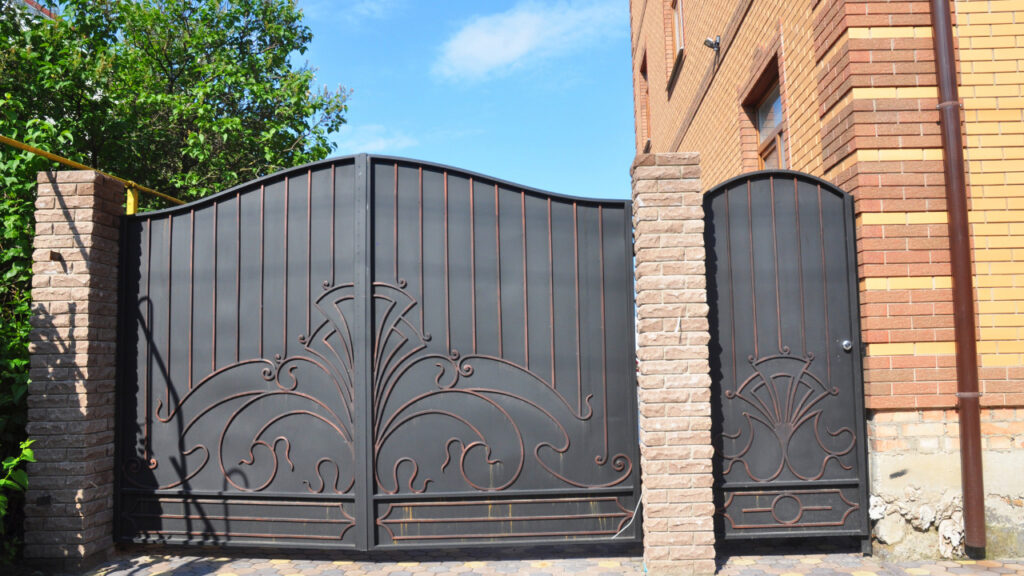
Steel is frequently utilized when building homes. Due to its strength and longevity, it’s a well-liked option for both interior and external doors.
Although steel and wood make up exterior doors, many homeowners use steel for their front doors due to its greater strength and ease of maintenance.
Steel doors can have either a solid or hollow core. The stuff is fabricated into door frames.
Additionally, steel doors are comparatively less expensive than wooden ones. They also come in many designs, are simple to paint, and require little maintenance. Different types of aluminum doors are also available in the market.
3. Glass

Glass doors are perfect for indoors. Typically, they have an aluminum or stainless steel frame and come in either clear or frosted color, depending on your taste and style of decor.
Glass doors have the primary benefit of not rusting, warping, swelling, corroding, or peeling off in severe weather. They are also not likely to have termites or any other insect infestation. Glass doors are unaffected by air humidity.
Small homes would benefit from installing glass doors because the material can visually expand the space and give the impression that the rooms are larger than they are. They also add beauty and charm to your décor by allowing light to pass through them.
Glass doors are not a good idea in a house with young children. It’s because they are easily broken by a hard hit. To protect your home’s privacy, you should cover these doors with blinds or curtains.
Glass doors are generally very affordable, though quality affects price.
4. Fiberglass
Fibreglass doors are relatively modern when compared to steel and wood. They are also becoming well-liked among homeowners as a sturdy substitute for wooden doors.
These doors are composed of reinforced plastic and glass fibers joined together with resin. Insulating foam made of polyurethane makes up its core.
Fibreglass is a material that can be molded into any shape and is used to make a variety of items, including windows, bathtubs, car body parts, and even boats. It can be just as strong as steel and has an appearance similar to wood.
Fibreglass doors don’t sag, shrink, or enlarge. In addition to being low maintenance and aesthetically pleasing, this material can be used for interior and exterior doors.
Fibreglass doors cost less than wooden doors. The inability to easily cut fiberglass doors to the proper size to fit the door frame is one of the main drawbacks.
Moreover, these doors require a little more effort to install and remove than wooden, glass, or steel doors.
5. PVC
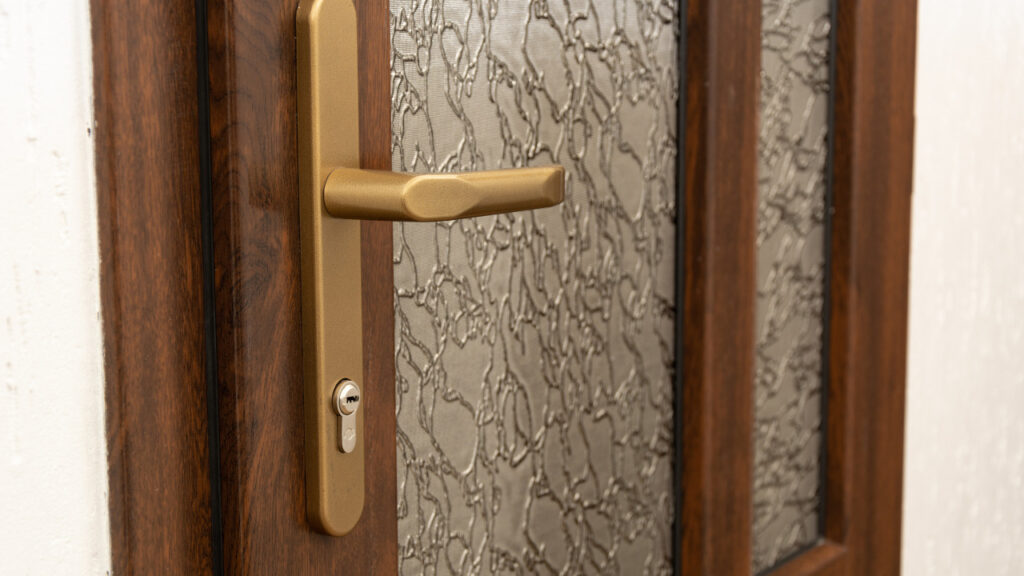
Polyvinyl chloride, or PVC, is another contemporary material that is becoming more and more common for interior door construction. These doors have the same appearance as wood, but they are lighter and much less expensive.
Thus, PVC is your best option for reasonably priced door styles that can improve your home’s aesthetic appeal without breaking the bank. Because this material resists corrosion, termite infestation, swelling, and contracting, these doors are highly durable. They are recyclable, have good insulating qualities, and can tolerate moisture and humidity.
PVC doors also require little upkeep. To restore their original appearance, all you need to do is wipe them down with a clean cloth. They weigh little and are also simple to install.
However, the fact that PVC doors don’t hold nails, screws, and other hardware very well is one of the disadvantages of installing them in your house. Repairing damage incurred during hardware installation is a nearly unattainable feat. PVC doors may also become discolored in harsh sunlight.
Polyvinyl chloride doors are not as robust and aesthetically pleasing as wooden ones.
5 Types of Doors by Style
Now that we’ve covered the most common materials for interior and exterior doors, let’s take a look at different types of doors by style:
1. Panel Doors
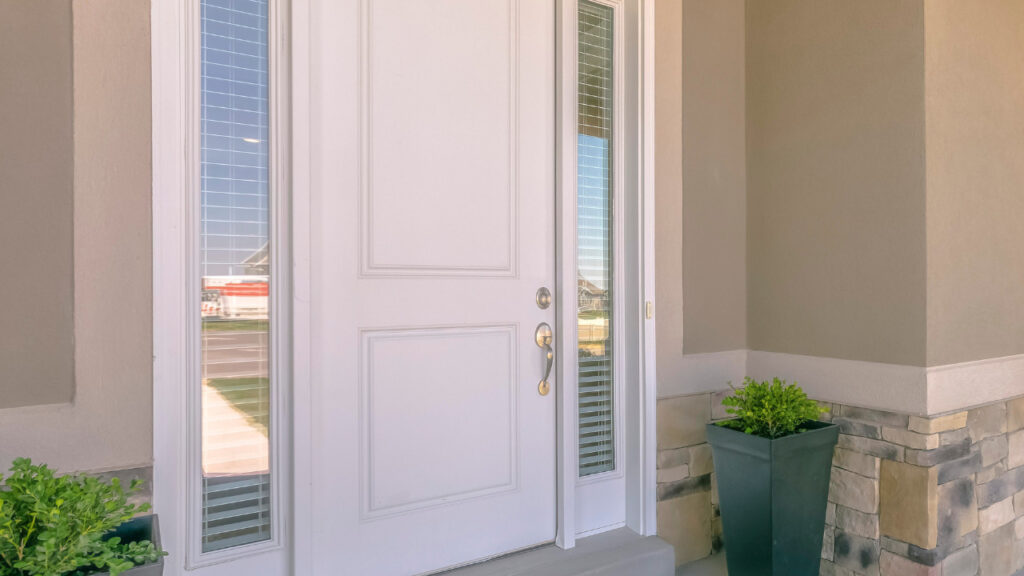
It is the traditional design for wooden doors.
Panel doors, as the name implies, are made up of wooden panels that are usually installed between three vertical stiles and three to four horizontal rails of solid wood.
Panel doors are slightly more expensive than other types of wooden doors due to their difficulty in construction. These doors add a touch of elegance to your home decor and make it appear luxurious.
However, because of their sturdiness and durability, you can consider them a long-term investment to maintain the resale value of your property.
Panel doors are aesthetically pleasing and come in a variety of designs. They are also more resistant to nails, screws, and other hardware than most other types of doors.
2. Flush Doors

Flush doors have no panels and are flat on both sides as compared to the panel doors. These doors are made of solid wood and particleboard strips stacked one inside the other within a frame made of wood.
MDF, veneer, laminate, and plywood sheets make up the majority of the outer layer. Hardwood is typically used for the edges. They have solid, hollow, or cellular cores.
Despite being less costly than panel doors, flush doors are not as common as the latter. One of the primary causes is that flush doors are less aesthetically pleasing than other types of doors because they are only offered in a restricted number of designs and have a plain surface on both sides.
On the other hand, flush doors are a terrific alternative if you’re on a budget because they have features comparable to panel doors.
3. Hinged Doors
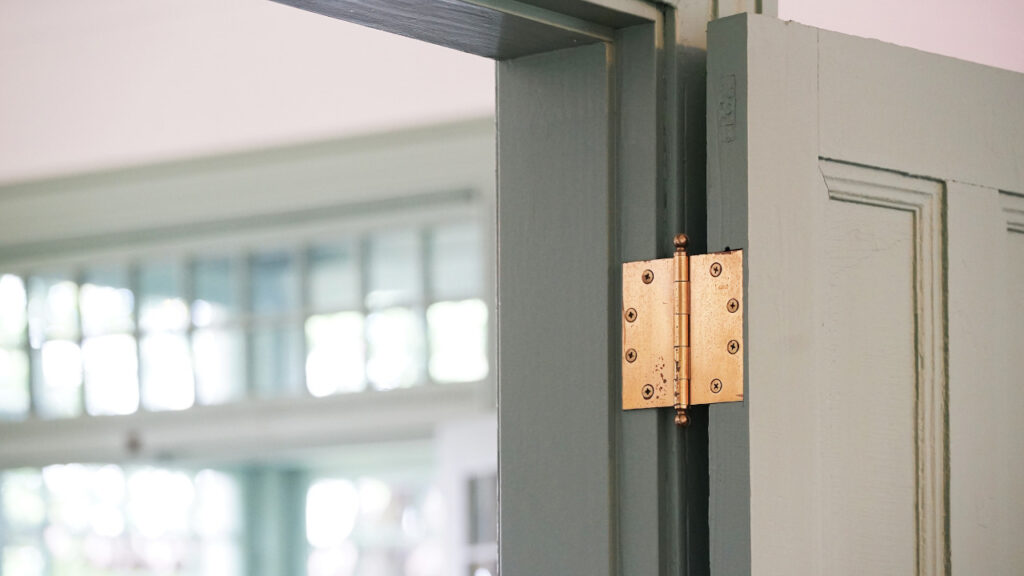
In terms of operation, hinged doors are the most popular door types. They consist of a panel or flush door with two or more hinges holding the panel’s end to the door jamb. When pressure is applied, the opposite end of the door swings open and closed.
4. Folding Doors

Folding or bi-folding doors can be folded inwards or outwards to create more space. Typically, they are made of steel, aluminum, or wood frames enclosing glass or wooden panels.
Folding doors usually have two or four doors arranged edge to edge so that, when opened, they stack up against the wall. Although they can also be used as patio or garden doors, these doors are best suited for interior use.
Installing folding doors will allow you to divide the living room and kitchen without sacrificing additional space.
5. Sliding Door

Sliding doors are among the most popular door styles used in residential buildings. These doors consist of a fixed panel fastened to two hangers after being positioned inside a steel or aluminum track. To open and close it, just slide it back and forth.
You can choose between single and double sliding doors based on your needs and style preferences.
Another commonly used style of sliding door is the pocket door. Since the panel completely slides into the wall recess when opened, these are perfect for entryways and small spaces because they save space.
PVS, wood, aluminum, and glass are excellent materials for building sliding door panels. Maintaining sliding doors is also easy. You can keep them in shape for a long time.
5 Types of Commercial Doors
Whether you run a restaurant, retail store, or office complex, different types of commercial doors can be ideal for your enterprise. Let’s have a look at these:
1. Wooden Doors for Offices
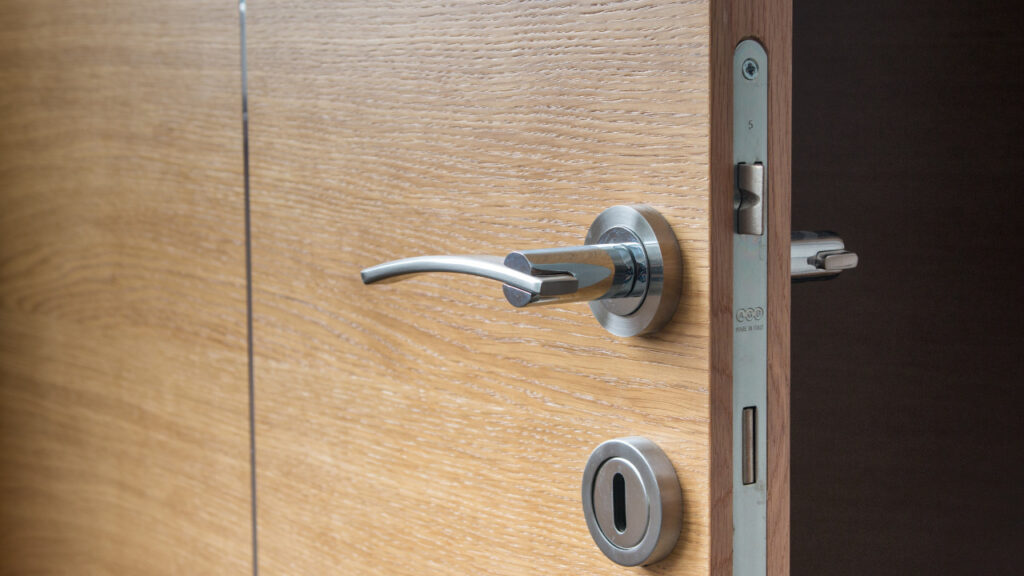
A wood office door contains processed mineral particles, lumber, and thin veneer. They are typically used indoors and offer a cozy aesthetic.
Wooden doors can add character to the room. However, they are hard to maintain. It’s because rough use can easily cause damage to them. When utilized outside, they are vulnerable to deterioration due to sunlight, wind, and moisture.
Therefore, you should use wood office doors in areas with little to no direct sunlight exposure, water intrusion, and very little chance of rough use.
2. Glass Herculite Doors

Herculite glass doors are made by a specific company, Herculite, which produces seamless glass doors for storefront and interior applications.
They provide a distinctive and contemporary choice for business doors. These have a sleek appearance, sharp edges, and tempered glass.
Prestigious office buildings and retail establishments can look more opulent thanks to Herculite glass. These doors can have varying thicknesses for improved security and a beautiful appearance.
Herculite doors are typically seamless, which means they sit flush with the headers and the inactive door. With these doors, access control systems and automatic openers combine to offer security control.
Furthermore, the glass Herculite door’s hardware is installed straight through the glass, maintaining its firmly contemporary appearance.
3. Hollow Metal Doors and Steel Doors

Businesses frequently choose commercial steel doors because they offer some of the best levels of longevity and protection available. When properly maintained, these doors can withstand the most damage without aging or showing wear and tear.
If you choose galvanized steel doors, you can be sure that the protective zinc layer will withstand harsh weather conditions and last for over 50 years. Over time, galvanized steel doors can maintain their durability and give your entryway a fresh new appearance.
Usually hollow, steel doors are not made entirely of metal. Instead, they are joined by soldering thick steel sheets.
These doors provide excellent security, high strength, and impact resistance, absorbing all impacts and reducing the likelihood of dents or wear and tear. Long-lasting and resilient to all climates, hollow metal doors are made of metal. These doors are customizable if you wish to enhance the security of your building and external doors.
4. Glass Storefront Doors
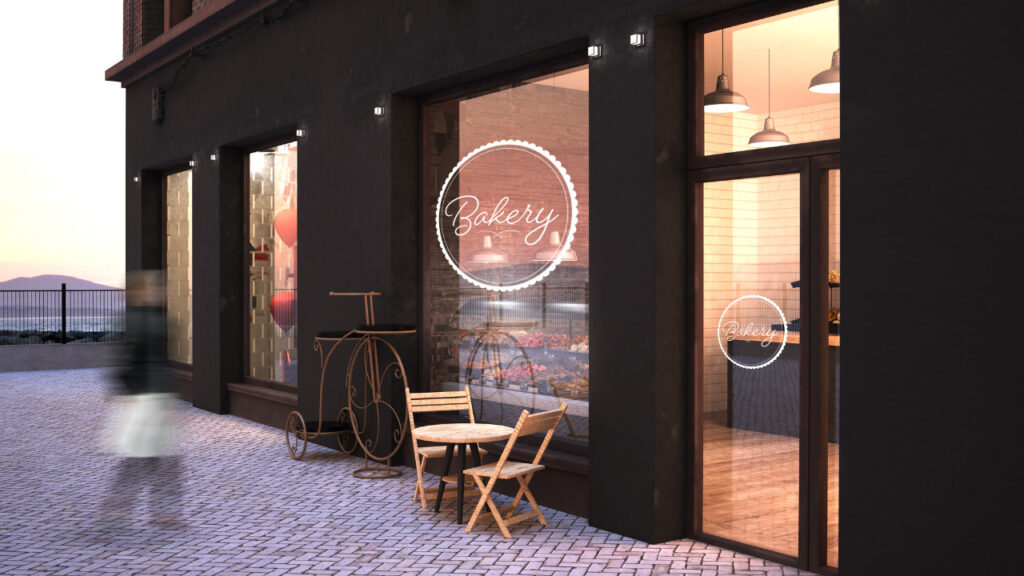
Glass storefront doors are the manual equivalent of most automatic doors. These are typically found in gas stations and strip malls. Remarkably, storefront doors make up the majority of the doors we work on, making them a common door type.
Storefront doors have aluminum frames with glass wrapped around them and aluminum planks supporting them horizontally. Both choosing hardware and complying with the code for storefront doors are easy and affordable processes.
Storefront doors are a great option for many businesses because they offer an equal mix of strength, affordability, and visibility into a business.
5. Overhead Doors

These specialized doors, known as industrial or overhead garage doors, are made to maximize space efficiency and offer simple access for different uses.
You can frequently find overhead doors in warehouses, loading docks, and industrial buildings. They are made of sturdy materials like steel or aluminum to withstand harsh use and offer strong security. They are perfect for places with limited space because of their vertical opening mechanism, making it possible to utilize interior and outdoor areas.
Modern overhead doors improve convenience and safety for businesses by providing smooth operations and protecting valuable assets within commercial buildings. These doors come with cutting-edge features like remote control operation, automated opening and closing systems, and safety sensors.
Choose the Right Door for Your Construction Project!
You have a basic understanding of the various types of doors. So you have more options when deciding which ones to use for your construction projects. By using a variety of doors, you can improve your construction projects and make well-informed decisions. For increased usability and accessibility, don’t forget to incorporate access doors and panels.
Take your projects to the next level by selecting the appropriate doors for your needs.




